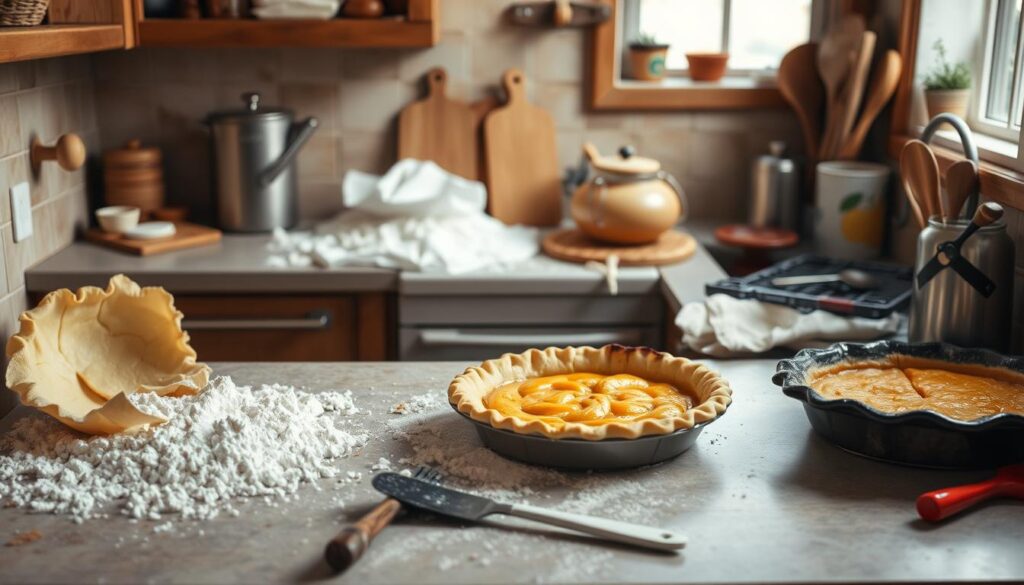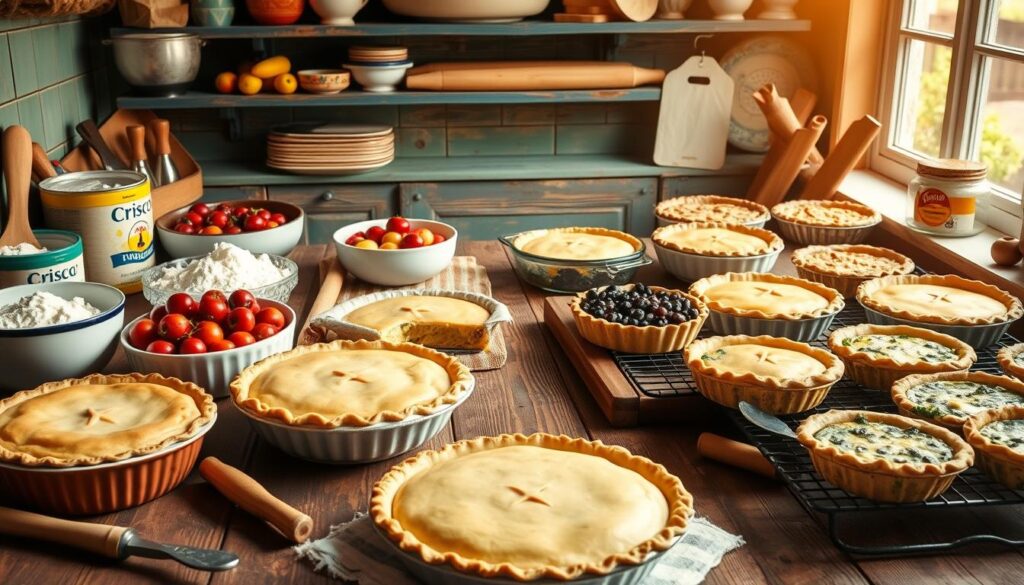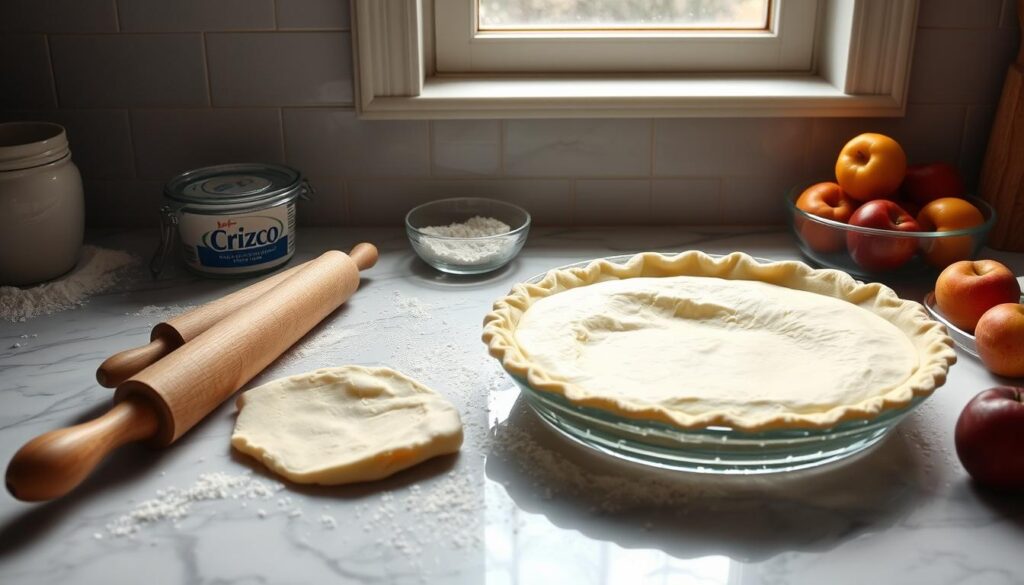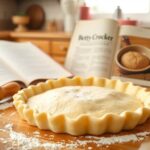Get the recipe for Crisco’s classic pie dough, the key to making flaky, bakery-quality pies at home.
Table of Contents
They know that a great pie starts with a great crust, and a great crust starts with the right ingredients, such as Crisco, a popular brand of vegetable shortening used in baking, particularly in pie making. The crisco pie dough recipe is a classic choice for many bakers, as it produces a flaky and tender crust that is perfect for a variety of fillings. To achieve a perfect homemade pie crust, it is essential to use the right techniques and ingredients, including a high-quality crisco pie dough recipe.
Making a flaky, homemade pie crust using Crisco is an art that requires some practice, but with the right guidance, anyone can master it. The key to a flaky crust is to use cold ingredients and to handle the dough gently, which will help to create a crust that is both tender and flaky. By following a simple crisco pie dough recipe and using the right techniques, bakers can create a delicious homemade crisco pie dough recipe. that is perfect for any occasion, with a flaky crust that will impress anyone.
The History of Crisco in American Pie Making
Crisco Pie Dough Recipe, introduced in the early 20th century, revolutionized american pie making by providing a convenient and reliable alternative to traditional fats. This innovation had a significant impact on home baking techniques, making it easier for people to create delicious pies. As a result, Crisco became a staple in American baking, particularly in pie making.
The introduction of Crisco marked a significant shift in the way people approached baking techniques. With Crisco, home bakers could produce high-quality american pie crusts without the need for lard or other traditional fats. This change paved the way for new pie making methods and recipes, further popularizing american pie across the country.
Why Crisco Revolutionized Home Baking
Crisco’s impact on home baking was profound, as it enabled bakers to produce consistent results without the variability of traditional fats. This reliability, combined with the ease of use, made Crisco an essential ingredient in many american pie recipes. As a result, pie making became more accessible, and the popularity of american pie continued to grow.
The Science Behind Crisco’s Flakiness
The unique properties of Crisco contribute to its flakiness, making it an ideal choice for pie making. By understanding the science behind Crisco’s flakiness, bakers can better appreciate the importance of this ingredient in american pie recipes. This knowledge also enables bakers to experiment with new baking techniques and recipes, further expanding the world of pie making.
Essential Ingredients for Perfect Pie Dough
To create a perfect pie dough recipe, it’s crucial to use high-quality ingredients. The essential ingredients needed include flour, Crisco, water, and salt. These ingredients play a significant role in producing a flaky and tender crust recipe.
A good pastry dough starts with the right type of flour. All-purpose flour is the most commonly used flour for pie dough, as it provides the necessary structure and texture. Crisco, a popular shortening, is used to create a flaky and tender crust. Water is added to bring the dough together, while salt enhances the flavor.
The following are the essential ingredients needed for a perfect pie dough recipe:
- 2 1/4 cups all-purpose flour
- 1 teaspoon salt
- 1 cup Crisco, chilled and cut into small pieces
- 1/4 cup ice-cold water
Using these ingredients, you can create a delicious and flaky crust recipe that’s perfect for any pastry dough application. Remember to keep your ingredients cold, as this will help to create a flaky and tender crust.
By following this simple pie dough recipe and using the right ingredients, you’ll be well on your way to creating a delicious and flaky crust recipe that’s sure to impress.
| Ingredient | Quantity |
|---|---|
| Flour | 2 1/4 cups |
| Salt | 1 teaspoon |
| Crisco | 1 cup |
| Water | 1/4 cup |
Required Kitchen Tools and Equipment
To make a perfect pie dough, it’s essential to have the right kitchen tools and equipment. Having the necessary tools will help you to efficiently mix, roll, and shape the dough, ensuring a flaky and tender crust. With the right baking tips and equipment, you’ll be able to produce a professional-looking pie.
In this section, we’ll discuss the must-have utensils, optional but helpful tools, and surface preparation guidelines to help you get started. The required kitchen tools and equipment include:
- Mixing bowl
- Rolling pin
- Pastry blender
Must-Have Utensils
These utensils are essential for making perfect pie dough. A mixing bowl is necessary for combining the ingredients, while a rolling pin is used to roll out the dough to the desired thickness. A pastry blender is used to cut the butter into the flour, creating a flaky texture.
Optional but Helpful Tools
In addition to the must-have utensils, there are several optional but helpful tools that can make the process easier and more efficient. These include a pastry brush, a dough scraper, and a pie crust shield. With the right kitchen tools and equipment, you’ll be able to create a perfect pie dough every time.
| Tool | Description |
|---|---|
| Mixing bowl | Necessary for combining ingredients |
| Rolling pin | Used to roll out the dough |
| Pastry blender | Used to cut butter into flour |
Classic Crisco Pie Dough Recipe
To create a delicious and flaky pie crust, it’s essential to follow a tried-and-true crisco recipe. The classic Crisco pie dough recipe is a staple in many American households, and for good reason – it’s easy to make and yields a tender, flaky crust. This pie dough recipe requires just a few ingredients, including flour, Crisco, water, and salt.
The key to a successful crisco recipe is to use cold ingredients and to mix the dough just until the ingredients come together. Overmixing can lead to a tough, dense crust, so it’s crucial to be gentle when combining the ingredients. By following these simple baking techniques, you’ll be well on your way to creating a delicious homemade pie crust.
Ingredient Measurements
The ingredient measurements for this classic Crisco pie dough recipe are as follows:
- 2 cups all-purpose flour
- 1 cup Crisco, chilled and cut into small pieces
- 1/4 cup ice-cold water
- 1/2 teaspoon salt
Mixing Instructions
To mix the dough, simply combine the flour, Crisco, and salt in a large bowl. Use a pastry blender or your fingers to work the Crisco into the flour until the mixture resembles coarse crumbs. Gradually add the ice-cold water, stirring with a fork until the dough comes together in a ball.
Rolling Techniques
Once the dough is mixed, it’s time to roll it out. To do this, simply turn the dough out onto a lightly floured surface and use a rolling pin to roll it out to the desired thickness. Be sure to use gentle, even strokes to avoid stretching or tearing the dough. By following these simple rolling techniques and using a classic crisco recipe, you’ll be able to create a beautiful, flaky pie crust that’s sure to impress.
Cold Ingredients: The Secret to Flaky Crust
When it comes to pie making, one of the most crucial factors in achieving a flaky crust is using cold ingredients. This is because cold ingredients help to create a crust that is tender and flaky, rather than tough and dense. By keeping your ingredients cold, you can ensure that your crust turns out light and airy, with a delicate texture that is perfect for a variety of fillings.
So, what are some baking tips for keeping your ingredients cold? Here are a few suggestions:
- Keep your butter and shortening in the refrigerator until you are ready to use them.
- Use ice-cold water when mixing your dough.
- Keep your dough in the refrigerator for at least 30 minutes before rolling it out.
By following these tips, you can help to ensure that your crust turns out flaky and delicious. And, with a little practice, you’ll be a pro at pie making in no time. Just remember to keep your ingredients cold, and you’ll be on your way to creating a crust that is truly exceptional.
In addition to keeping your ingredients cold, it’s also important to handle your dough gently when rolling it out. This will help to prevent the dough from becoming tough and dense, and will ensure that your crust turns out light and flaky. With a little patience and practice, you’ll be able to create a flaky crust that is perfect for any occasion.
| Tips for Achieving a Flaky Crust | Description |
|---|---|
| Keep ingredients cold | Helps to create a tender and flaky crust |
| Handle dough gently | Prevents dough from becoming tough and dense |
| Use ice-cold water | Helps to create a crust that is light and airy |
Common Mistakes to Avoid
When it comes to pie making, even the most experienced bakers can fall prey to common mistakes that can ruin the entire baking techniques process. To ensure that your pie turns out perfectly, it’s essential to be aware of these mistakes and take steps to avoid them. One of the most critical aspects of pie making is the temperature of the ingredients, as it can affect the final product’s texture and consistency.
In pie making, using warm ingredients can lead to a tough, dense crust, rather than a flaky, tender one. To avoid this, make sure to keep your ingredients cold, especially the butter and water. This will help to create a flaky, tender crust that is perfect for any filling. Another common mistake is overmixing the dough, which can lead to a tough, chewy crust. To avoid this, mix the ingredients just until they come together in a ball, then stop mixing.
Some common mistakes to avoid in baking techniques include:
- Overmixing the dough
- Using warm ingredients
- Rolling the dough too thinly
By avoiding these common mistakes, you can ensure that your pie turns out perfectly, with a flaky, tender crust and a delicious filling. Whether you’re a seasoned baker or just starting out, being aware of these common mistakes can help you to improve your pie making skills and create delicious pies that are sure to impress.

In addition to avoiding common mistakes, it’s also essential to use the right techniques when making a pie. This includes using the right type of flour, keeping the ingredients cold, and not overworking the dough. By following these tips and avoiding common mistakes, you can create delicious pies that are perfect for any occasion.
| Mistake | Solution |
|---|---|
| Overmixing the dough | Mix ingredients just until they come together in a ball |
| Using warm ingredients | Keep ingredients cold, especially butter and water |
| Rolling the dough too thinly | Roll dough to the right thickness to avoid cracking |
Storage and Make-Ahead Tips
When it comes to storing pie dough, it’s essential to keep it fresh for as long as possible. A good pie dough recipe can be stored in the refrigerator for up to 3 days or frozen for up to 2 months. To store in the refrigerator, wrap the dough tightly in plastic wrap or aluminum foil and place it in a covered container. For freezing, divide the dough into smaller portions, wrap each portion tightly, and place them in a freezer-safe bag.
For make-ahead convenience, consider preparing the pie dough ahead of time and storing it in the refrigerator or freezer. When you’re ready to use it, simply thaw the frozen dough overnight in the refrigerator or thaw it quickly by submerging the wrapped dough in cold water. Here are some tips for storing and making ahead:
- Store pie dough in the refrigerator for up to 3 days
- Freeze pie dough for up to 2 months
- Divide dough into smaller portions for easier thawing
- Thaw frozen dough overnight in the refrigerator or quickly by submerging in cold water
By following these storage and make-ahead tips, you can enjoy fresh, homemade pie dough whenever you want, using your favorite pie dough recipe. Remember to always label and date your stored dough so you can easily keep track of how long it’s been stored.
With these tips, you’ll be able to make delicious pies with ease, using your freshly stored or made-ahead pie dough. Whether you’re a seasoned baker or just starting out, these tips will help you achieve perfect results every time.
| Storage Method | Storage Time |
|---|---|
| Refrigerator | Up to 3 days |
| Freezer | Up to 2 months |
Sweet and Savory Variations
Pie making is an art that allows for endless creativity, and one of the most exciting aspects is experimenting with sweet and savory variations. By adding different ingredients to the pie dough, you can create a wide range of flavors to suit any taste. In the world of pie making, variations are what make each pie unique and exciting.
When it comes to sweet variations, the possibilities are endless. You can add sugar, spice, or fruit to create a delicious dessert pie. For example, a hint of cinnamon or nutmeg can add warmth to a sweet pie, while a splash of vanilla can enhance the flavor of the filling. Some popular sweet variations include:
- Apple pie with a hint of cinnamon
- Pumpkin pie with a touch of nutmeg
- Cherry pie with a splash of almond extract
In addition to sweet variations, savory variations are also a great way to mix things up in pie making. By adding herbs, cheese, or spices, you can create a delicious savory pie perfect for lunch or dinner. Some popular savory variations include:
- Spinach and feta pie with a hint of garlic
- Mushroom and onion pie with a touch of thyme
- Broccoli and cheddar pie with a splash of paprika

Whether you’re in the mood for something sweet or savory, the key to making a great pie is to experiment with different ingredients and flavors. With a little creativity, you can create a unique and delicious pie that’s sure to impress. So don’t be afraid to try new things and make pie making your own, with your own sweet and savory variations.
| Variation | Ingredients | Flavor Profile |
|---|---|---|
| Sweet | Sugar, spice, fruit | Warm, comforting |
| Savory | Herbs, cheese, spices | Savory, umami |
Troubleshooting Your Pie Crust
When it comes to baking a perfect pie, one of the most critical components is the pie crust. However, many people face common problems with their pie crust, including texture problems, appearance issues, and baking challenges. To overcome these issues, it’s essential to understand the basics of troubleshooting your pie crust.
A good pie crust should be flaky, tender, and golden brown. But sometimes, the crust can turn out tough, soggy, or burnt. To fix these problems, you need to identify the root cause. For instance, if your crust is too tough, it may be due to overmixing the dough. On the other hand, if your crust is too soggy, it may be due to underbaking or using too much liquid in the filling.
Common Problems and Solutions
- Texture problems: Check your ingredient ratios and mixing techniques to ensure you’re creating a flaky and tender crust.
- Appearance issues: Adjust your baking time and temperature to achieve a golden brown crust.
- Baking challenges: Use the right type of pan and baking sheet to prevent the crust from burning or sticking.
By following these tips and troubleshooting your pie crust, you can create a delicious and visually appealing pie that will impress your family and friends. Remember to always use high-quality ingredients and follow a reliable recipe to ensure the best results. With practice and patience, you’ll become a master pie baker, and your pie crust will be the envy of everyone.
Conclusion: Mastering the Art of Pie Dough
Mastering the art of pie dough takes time and practice, but the rewards are well worth the effort. By following the Crisco-inspired techniques outlined in this article, home bakers can achieve consistently flaky, tender crusts that elevate any sweet or savory pie. The key is to embrace the nuances of working with pie dough, from maintaining the right temperature to perfecting the rolling and shaping process.
With patience and a commitment to honing your skills, you’ll soon be able to craft pie dough that rivals the best bakeries. Don’t be discouraged by initial missteps – each batch is an opportunity to learn and improve. Embrace the art of pie dough making, and you’ll be rewarded with pies that impress and delight. So, roll up your sleeves, fire up your ovens, and let’s master the art of pie dough together.



